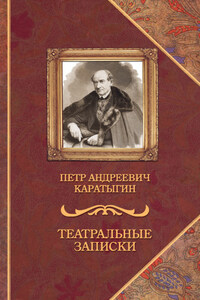Beatrice Gandolfo
Khadija, photographed by Amedeo before the Second world War
The invasion of Ethiopia, October 1935: Amedeo on Sandor with the Spahys di Libya
Uncle Amedeo
Sotto-Tenente Amedeo Guillet, newly commissioned at the Cavalleggeri di Monferrato, 1931
Amedeo, in full dress uniform, 1935
Amedeo jokingly reviews some splendidly attired fellow officers
Amedeo at the Military Academy at Modena, 1928
Amedeo rides down a steep hillside during a cavalry exercise at Pinerolo
Two views of Amedeo as a competitive rider, Genoa 1934
A horseman from the Spahys di Libya
Ethiopian irregulars confront their better-armed adversaries
Realising their position is hopeless, some Ethiopian warriors take flight
The Spahys di Libya completely surround the remaining Ethiopians
Panicking warriors flee amid the Italian light tanks
The Spahys charge on, leaving the remaining Ethiopians to the Italian infantry
Italian infantry pour down the hillside and the remaining Ethiopians make a bid to escape
Ethiopian warriors parade through Addis Ababa
Marshal Badoglio arrives at the front © Ullstein Bilderdienst
Front page story …‘The punishment of Abyssinian brigands …’
Amedeo Guillet after the charge at Selaclaclà in December 1935
Haile Selassie after the defeat at Mai Ceu
The Spahys di Libya in Rome on the first anniversary of the founding of Italy’s African empire, June 1937
Antonio Ajmone Cat
The Duke of Aosta dwarfs King Vittorio Emmanuele III
Princess Jolanda and Amedeo in 1937 in Libya
Mussolini rides into Tripoli © Biblioteca di Storia Moderna e Contem-poranea
Mussolini, Balbo and other Fascists salute the tricolore © Biblioteca di
Storia Moderna e Contemporanea Libyan crowds greet the Duce and Italo Balbo © Biblioteca di Storia Moderna e Contemporanea
Mussolini on horseback surrounded by Libyan troops bearing the fasces
The Duce raises the Sword of Islam
The governor of Libya, Italo Balbo, pins a medal on Amedeo
Amedeo in Spain, beside the Fiat Ansaldo tanks
The general’s adjutant at the Italian front during the Spanish Civil War
General Frusci in the uniform of the ‘Black Flames’ division during the Spanish Civil War
A Russian armoured car captured by Amedeo and the arditi from the Spanish forces, Santander, August 1937
Rome 1938: Hitler stands beside the king; also pictured are Mussolini, Marshal De Bono, Queen Elena, Ciano, Hess, Ribbentrop and Goebbels
Barefoot, malnourished children with their heads shaven turn out for a civic ceremony in Salerno, 1937
General Graziani; and being carried away after an assassination attempt in Addis Ababa, 1937
Beatrice Gandolfo in February 1937, in medieval costume
The fortified outpost at Amba Gheorgis on the road from Gondar to Asmara
Amedeo talking to Landolfo Colonna
Amedeo welcomed by dancing women in the highlands of Begemeder, 1938
Amedeo with an important Ethiopian chief in 1939
Amedeo drilling his garrison at Amba Gheorgis in 1939
The Duke of Aosta inspects the fort at Amba Gheorgis
The garrison at Amba Gheorgis rides out, with Amedeo saluting
Amedeo and others are carried in triumph at Amba Gheorgis after a successful operation against Ethiopian rebels
The Gruppo Bande Amhara a Cavallo Group in full charge
Amedeo with his Gruppo Bande in Eritrea, 1940
Amedeo rides beside General Frusci’s car at an inspection of the Gruppo Bande in the summer of 1940
The infantry of The Gruppo Bande were made up of Yemeni mercenaries
The British invade: The Gazelle Force on the move
The West Yorks Regiment at Dologorodoc
General Nicola Carnimeo
General Frank Messervy
General Lorenzini, the ‘Lion of Keren’
Surrender of the Duke of Aosta
Lieutenant Renato Togni with the horse on which he was killed at Keru in 1941
Daifallah the Yemeni
Amedeo as Ahmed Abdullah
A rare photograph of Ahmed, Imam of the Yemen
Major Max Harari riding the captured Sandor at Asmara, autumn 1941
Major Max Harari leaving his office in Asmara
Sandor’s hoof








